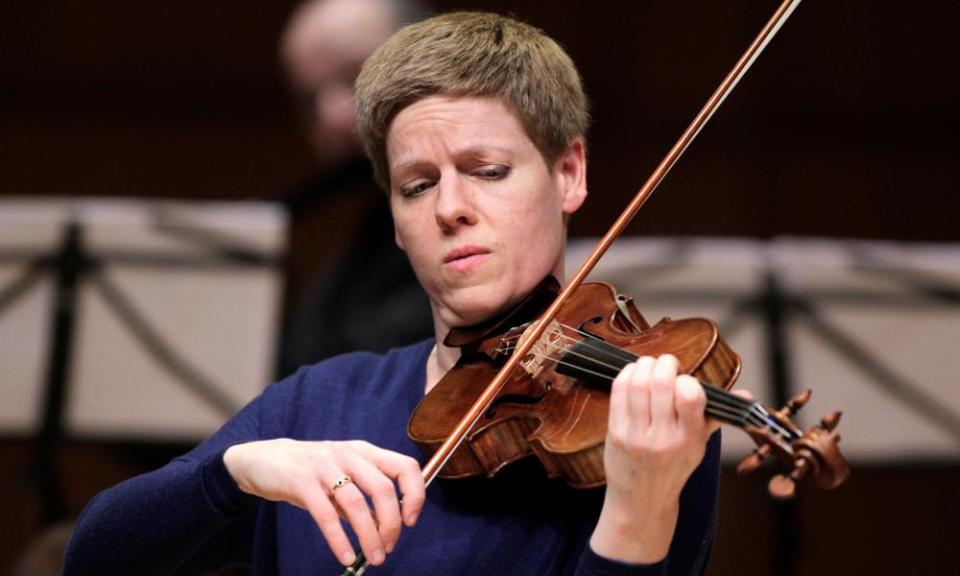LSO/Gardiner/Faust review – alert to Schumann's volatility and rigour

This was the second concert in John Eliot Gardiner and the London Symphony Orchestra’s Schumann cycle, a major reappraisal of the symphonies and orchestral music, spread over two years. The Fourth Symphony, the Genoveva Overture, and the Overture, Scherzo and Finale, had long been scheduled in the programme, but its centrepiece, by a twist of fate, was the Violin Concerto, played by Isabelle Faust, a last-minute substitution for Mozart’s C minor piano concerto, K503, after pianist Piotr Anderszewski succumbed to flu.
Written in 1853, shortly before Schumann’s final breakdown, the concerto remains controversial. Clara Schumann, fearing that it exposed her husband’s worsening mental state, suppressed the score, which was not heard until 1937. “It’s not the work of a madman,” Faust stated emphatically as she and Gardiner addressed the audience before the performance, though you could argue that the nagging orchestral figurations of the first movement and the harmonic instability of the second suggest deep psychological anguish.
More important, perhaps, is the fact that it constitutes an attempt to rethink the concerto form itself along symphonic rather than virtuoso lines. Faust, who describes herself as a Schumann fanatic, played with fierce conviction, generating furious intensity towards the close of the first movement and investing the second with deeply felt lyricism. The arabesques and “pirouettes” (Faust’s word) of the polonaise finale were exquisite, though neither she nor Gardiner could disguise the fact that the movement itself is fractionally too long – as if Schumann didn’t know quite how to end it.
Gardiner remains one of the great Schumann interpreters, wonderfully alert to the music’s volatility and rigour. The LSO, on terrific form for him, played seated for the concerto, though, following 19th-century practice, the upper strings, brass and woodwind stood for the symphonic works. Gardiner opted for the 1841 version of the Fourth, as opposed to Schumann’s denser rewrite of 1851, and the textural transparency and rhythmic elan proved utterly beguiling. The Genoveva Overture swivelled between Sturm und Drang turbulence and elation, while Overture, Scherzo and Finale was electric in its tension and excitement.

 Yahoo News
Yahoo News 